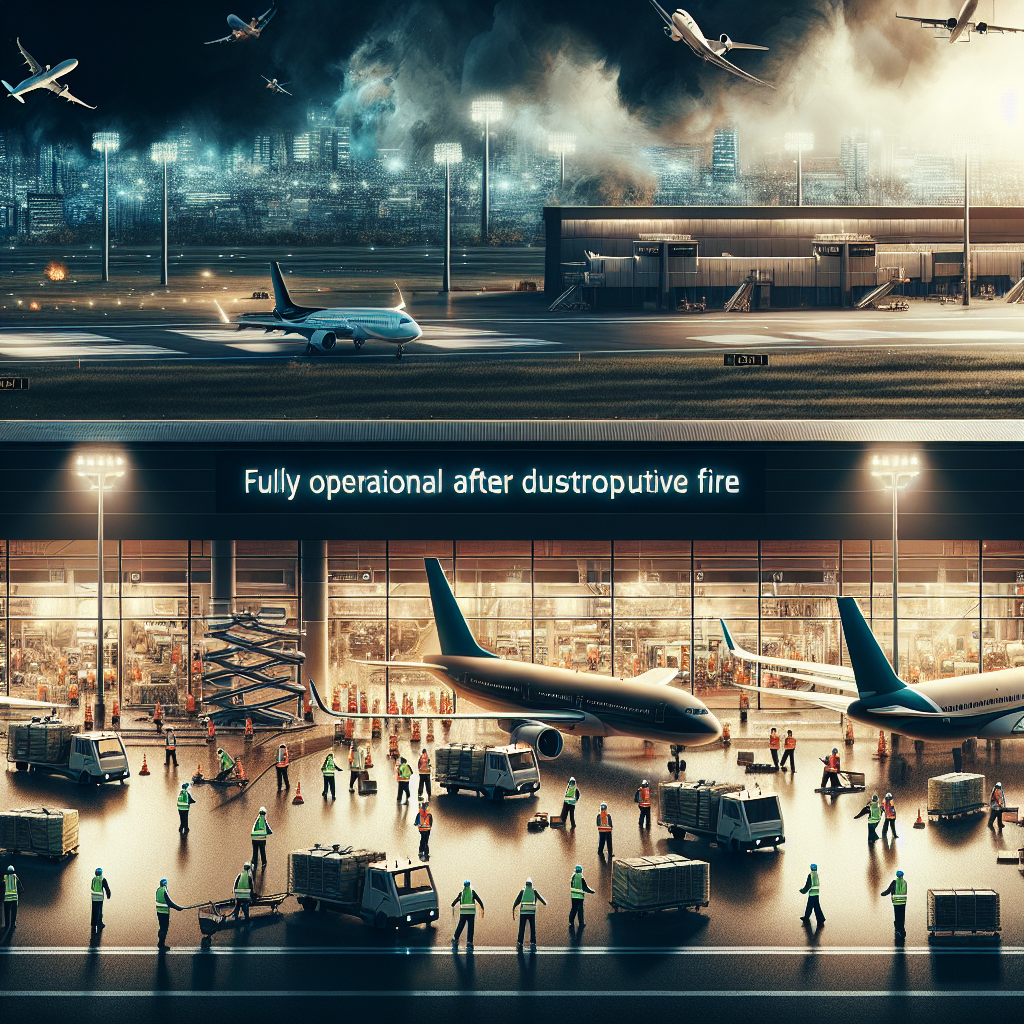Heathrow Airport Back to Business after Fire-Induced Shutdown
A Remarkable Recovery at Heathrow Airport
Picture this: one of the world’s busiest airports suddenly comes to a halt. That’s exactly what happened at London’s Heathrow Airport when a fire broke out at an electrical substation, causing a massive power outage and bringing operations to a screeching stop. On March 25, 2025, Heathrow proudly announced that it was "fully operational" once again, ending what had been a harrowing 24 hours of disruption for thousands of travelers and the aviation industry alike.
The situation brought to light the critical role airports like Heathrow play in global connectivity, and how even a single disruption can ripple across nations, affecting passengers, businesses, and economies. But how did Heathrow achieve such a rapid recovery? Let’s delve into the details of this extraordinary effort and its wider implications.
What Happened? The Details of the Heathrow Shutdown
On March 24, 2025, Heathrow Airport faced an unprecedented challenge: an electrical substation fire disrupted power flow across its terminals. The fire, while quickly contained by emergency services, created a domino effect. Essential airport systems—lighting, security counters, and critical IT—were rendered non-functional. Flights were grounded, leading to delays, cancellations, and frustrated passengers.
This wasn’t just an inconvenience for local travelers—Heathrow serves as a hub for international connections. The disruption affected schedules worldwide, showcasing the importance of robust operational contingencies for such global infrastructure.
Heathrow's Rapid Response Team: Behind the Heroic Comeback
The airport's recovery was nothing short of extraordinary. Here’s how they achieved it:
1. Emergency Protocol Activation
Heathrow’s well-rehearsed emergency response team acted quickly. Their swift coordination with local fire services ensured the fire was extinguished without loss of life or severe structural damage.
2. Temporary Solutions for Critical Systems
Portable generators were deployed to power essential functions temporarily, enabling limited operations while permanent repairs were underway. Priority was given to rerouting stranded passengers and keeping flight schedules updated.
3. Round-the-Clock Repairs
Electrical engineers and maintenance teams worked tirelessly to restore the damaged substation. By collaborating with utility providers, the airport sped up the repair process—an effort that would usually take days was completed in less than 24 hours.
The Impact on Travelers and Airlines
For passengers, the fire was a nightmare scenario: canceled holidays, missed business appointments, and extended layovers turned Heathrow’s lounges into scenes of frustration. Airlines, on the other hand, struggled to rearrange flights, allocate resources, and communicate with affected passengers—an effort that underscored the significance of clear crisis management.
Social media was flooded with both complaints and praise. Some travelers expressed anger over missed connections, while others commended the airport staff for their dedication amid the chaos. Stories of stranded passengers being offered food, sleeping arrangements, and flight rebookings circulated widely, hinting at Heathrow’s customer-focused approach during the ordeal.
Lessons Learned: Building Resilience in Global Aviation
This incident serves as a wake-up call for airports worldwide. As we rely more heavily on interconnected systems powered by electricity and digital operations, vulnerabilities like power failures can have far-reaching consequences. Airports must invest in:
- Redundant Power Systems: Backup options like solar-powered microgrids or battery energy storage could help avoid complete shutdowns.
- Proactive Maintenance: Regular inspections and upgrades to infrastructure are non-negotiables to prevent incidents like this.
- Enhanced Crisis Communication: Transparency is key when travelers are left stranded. Updates should be timely, accurate, and accessible.
Conclusion: A Testament to Human Ingenuity
Heathrow Airport’s story of recovery is ultimately a testament to human resourcefulness and the extraordinary efforts of emergency teams, engineers, and staff. While the fire posed significant challenges, it also highlighted Heathrow's capabilities and preparedness in managing crises of this magnitude. It’s not just an airport—it's a lifeline for travelers and businesses around the world, and its rapid return to full operation was a much-needed win for everyone affected.
The incident is also a reminder for leaders in the aviation industry: resilience and adaptability will define success in a fast-changing, increasingly connected age. Airports and governments must work together to future-proof these vital hubs to keep travelers, goods, and economies moving smoothly.
Q&A: Key Questions on Heathrow’s Disruption
Q1: How long was Heathrow Airport closed?
A1: Heathrow faced a daylong closure but announced full operational recovery within 24 hours.
Q2: What caused the fire?
A2: The fire broke out at an electrical substation, disrupting power across airport operations.
Q3: How were stranded passengers assisted?
A3: Heathrow staff provided temporary lounge spaces, food, and accommodations for affected travelers, as well as updated flight options.
Q4: Will similar incidents happen in the future?
A4: While Heathrow has robust systems, this incident underscores airports globally must invest in backup power grids and preventive maintenance.
Q5: What industries were most affected by this outage?
A5: The aviation, tourism, and logistics industries faced the brunt of the disruption, as flights were canceled or delayed worldwide.
Related Tags
#HeathrowAirport #TravelNews #AviationCrisis #AirportFire #LondonNews #CrisisManagement #GlobalTravel
Final Thoughts
Whether you’re a frequent flyer or a one-time tourist, the temporary closure of Heathrow Airport serves as a reminder of how deeply interconnected our world has become. The efforts to resolve the crisis reflect not just technical expertise but also the determination to keep life moving—no matter what challenges arise. Share your own Heathrow stories in the comments! Have you ever faced a travel disruption like this? How did you handle it? Let’s discuss! ✈️
